MailBag August 30, 2013 at 09:06 AM
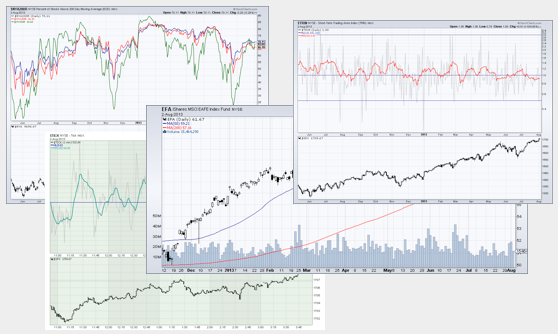
Extra and PRO subscribers can install ChartPacks to instantly populate their account with key ChartLists. There are currently three ChartPacks available: StockCharts Essentials with ChartList Framework, Arthur Hill’s “Market in a Nutshell” and Arthur Hill’s Essential ChartStyles. A ChartPack is a collection of ChartLists. Each ChartList contains a collection of related SharpCharts. There are also specific ChartStyles associated with some of these SharpCharts. A ChartStyle is a template with specific chart settings that users can apply to other charts. For example, the Essential Read More
MailBag August 23, 2013 at 09:23 AM
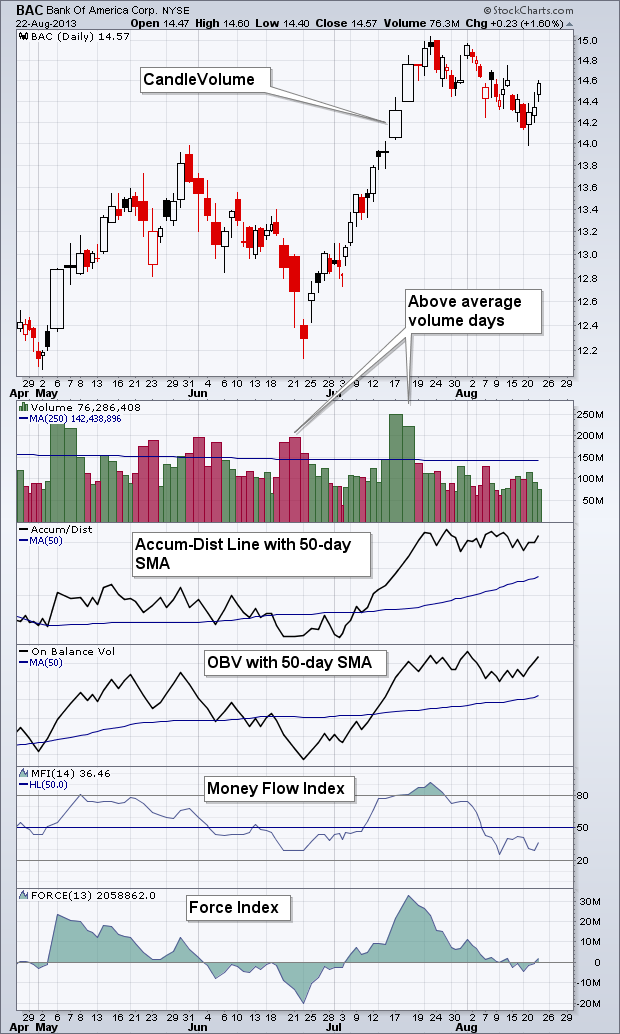
StockCharts offers two charting styles to track volume as well as several volume-based indicators to measure money flow, which is the flow of volume. First, chartists can set the chart “type” to Equivolume or CandleVolume to view volume right on the price chart. The width of the Equivolume boxes and CandleVolume candlesticks is based on volume. Wide boxes or candlesticks reflect high volume, while narrow ones indicate low volume. Second, chartists can add volume as an indicator and apply a 250-day moving average, which is about a year. Volume bars that exceed this moving average show Read More
MailBag August 16, 2013 at 10:07 AM
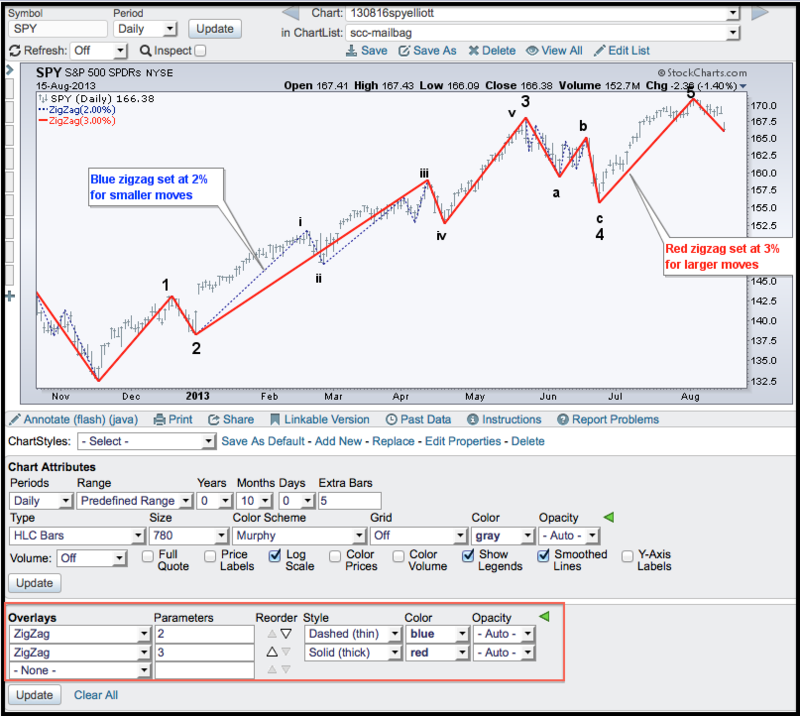
Chartists can use the Zigzag indicator to quantify price movements and identify significant peaks and troughs. The peaks and troughs can then be used to apply an Elliott wave count. The chart below shows the S&P 500 ETF (SPY) with a 3 percent Zigzag (red line) and a 2 percent Zigzag (dotted blue line). The red line shows price moves that are 3% or more, while the dotted blued line shows price moves that are 2% or more. Chartists can use the red line for a larger degree wave count and the blue dotted line for a smaller degree wave count. Based on this count, it looks like SPY just Read More
MailBag August 09, 2013 at 10:16 AM
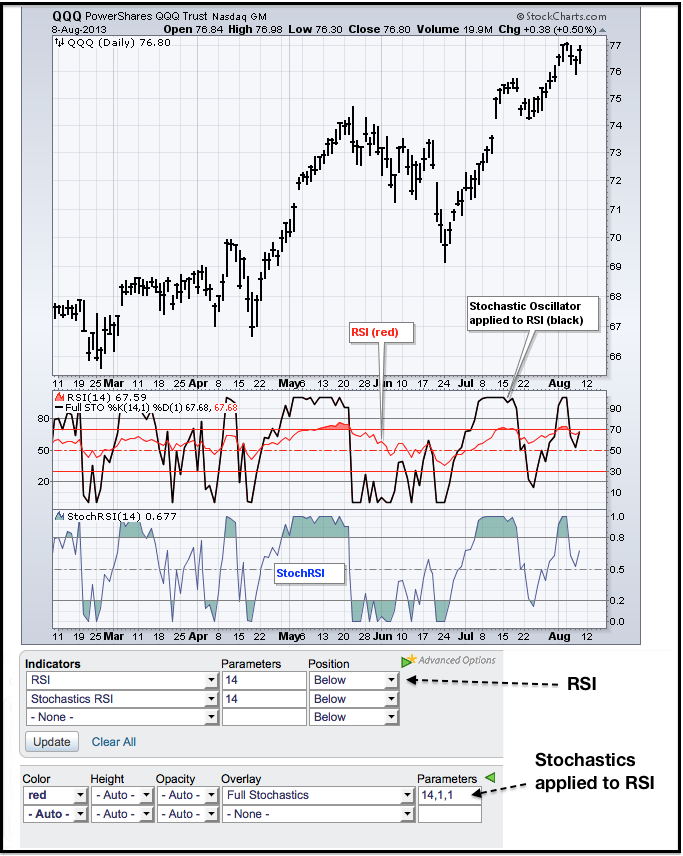
Traders can speed up to RSI by using Stochastics RSI, or StochRSI. In their 1994 book, The New Technical Trader, Tushard Chande and Stanley Kroll explain that RSI can oscillate between 80 and 20 for extended periods without reaching extreme levels. Notice that 80 and 20 are used for overbought and oversold instead of the more traditional 70 and 30. Traders looking to enter a stock based on an overbought or oversold reading in RSI might find themselves continuously on the sidelines. Chande and Kroll developed StochRSI to increase sensitivity and generate more overbought/oversold Read More
MailBag August 02, 2013 at 08:54 AM
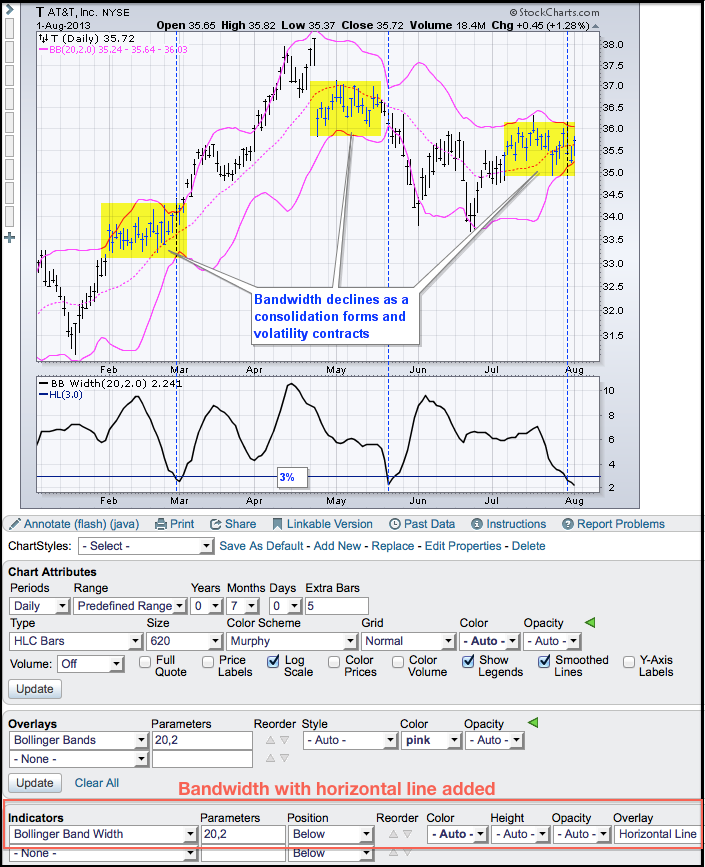
StockCharts users can measure the difference between Bollinger Bands by using the Bandwidth indicator. This nifty indicator shows chartists bandwidth as a percentage of the middle band, which is the 20-day SMA. There are two steps for calculation. First, subtract the lower band value from the upper band value. Second, divide this difference by the value of the 20-day SMA. Low BandWidth values suggest that volatility is low and a consolidation may be forming. John Bollinger theorized that periods of low volatility are often followed by periods of higher volatility. This implies that low Read More